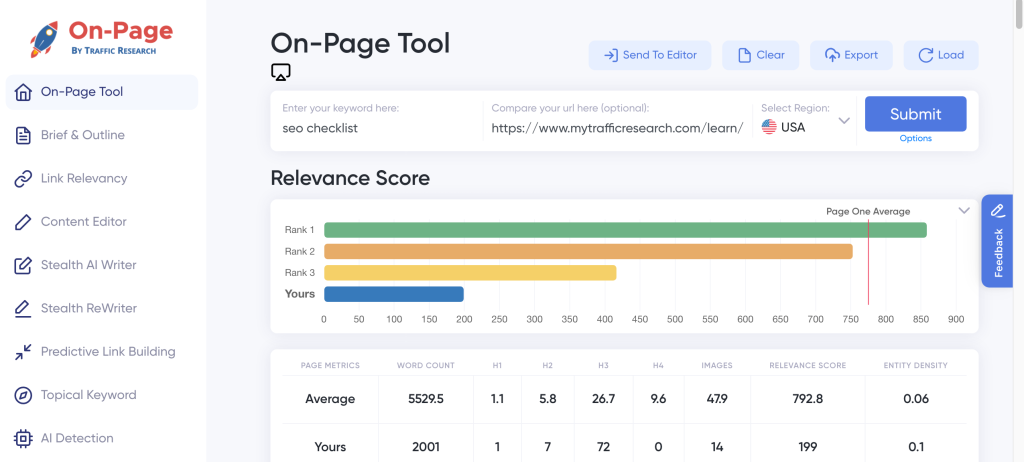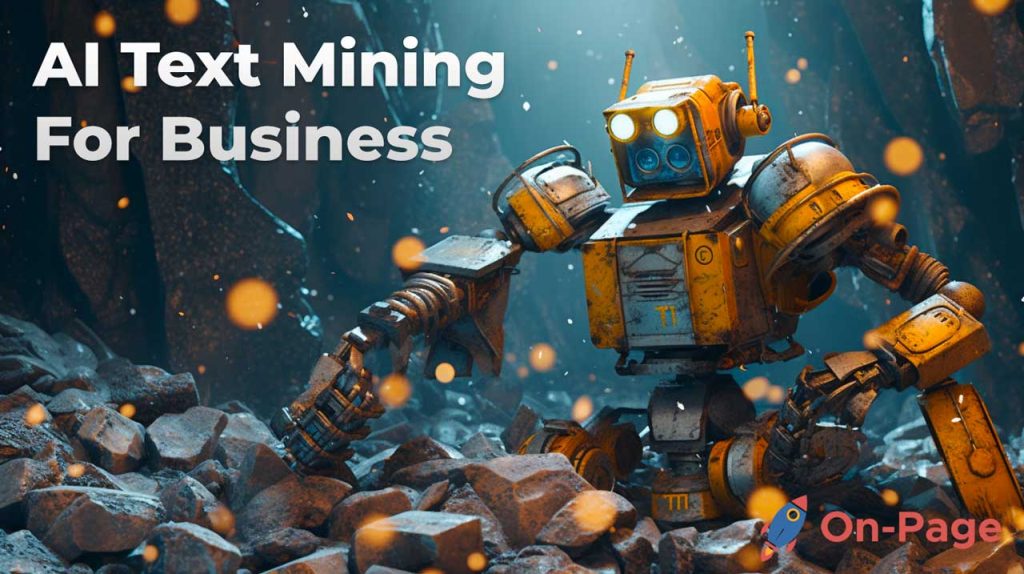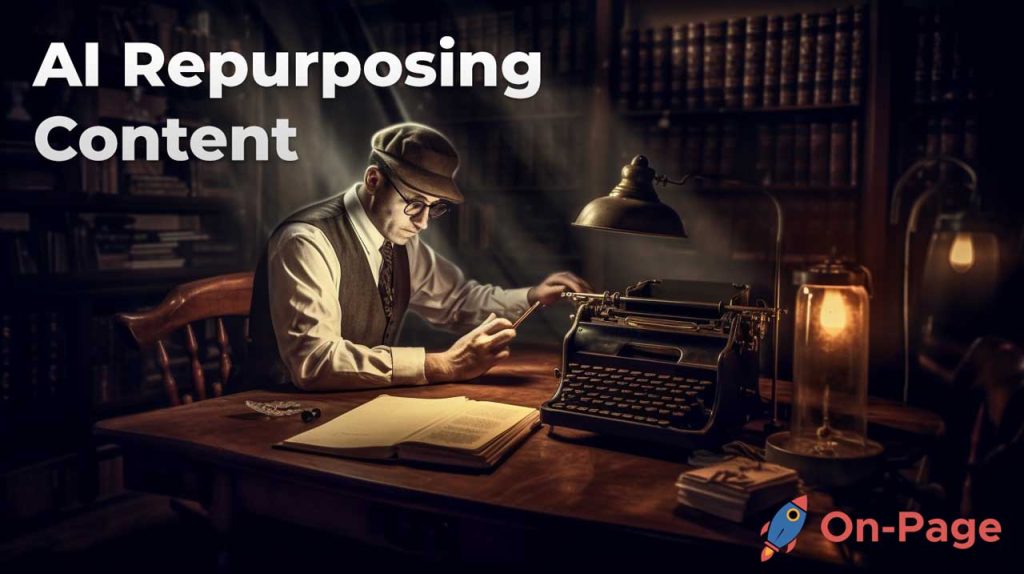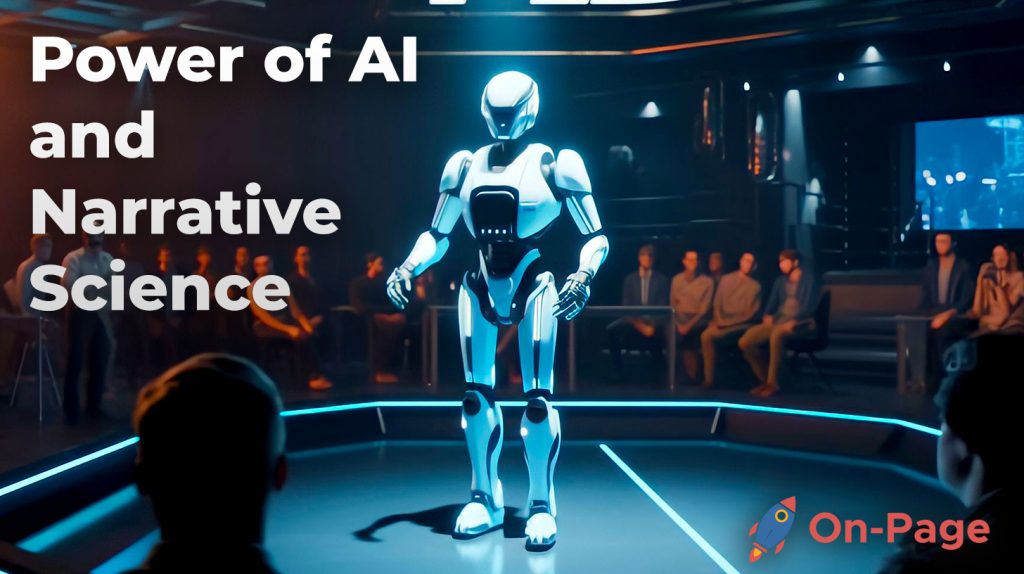
Are you tired of spending endless hours crafting that perfect piece only to realize it doesn’t generate the desired impact? Imagine having an army of expert writers at your fingertips, tirelessly creating powerful content that captivates your audience and rockets your website rankings, all in record time! Enter the game-changer: artificial intelligence.
AI writing tutorials provide a crash course on how to harness the power of cutting-edge technology to effortlessly create mind-blowing content — it’s like Tony Stark shaking hands with Shakespeare! Dive into this thrilling new era where machines become your most trusted writing partners, making your creativity fly and breaking the shackles of conventional content generation. Aren’t you intrigued?
These tutorials cover how to use AI-powered tools for content generation, tips for incorporating natural language processing (NLP) into your writing, and best practices for optimizing your content for search engine optimization (SEO). They are designed to help writers at all levels leverage the power of AI to improve their craft and create more effective written content.
AI Writing for Tutorials
As technology advances, it is becoming increasingly evident that AI writing tools are the future of content creation. One area where these tools can be used effectively is in creating tutorials and guides. Unlike traditional blogs and articles, tutorials require a high level of specificity and detail to be useful to readers. AI writing tools can help create content that is clear, concise, and easy to understand.
For instance, imagine a tutorial on how to build a website. A human writer would have to spend hours researching and writing the content from scratch. On the other hand, an AI writing tool can generate the same content much faster while still maintaining accuracy and quality.
AI writing tools can help writers overcome writer’s block by generating ideas about topics they may not have considered. These tools analyze data from various sources and suggest relevant topics that will resonate with readers.
However, some argue that AI-generated content lacks creativity since machines cannot replicate human imagination. While this may be true to some extent, it does not negate the fact that AI writing tools are valuable in producing informative tutorials with consistent tone and voice.
Think of AI as your co-pilot during your content creation journey. It helps you navigate through blocks while keeping you on the right track.
Benefits of Using AI in Content Creation
AI writing tools offer several benefits when it comes to content creation, including time-saving, increased efficiency, and accuracy.
For instance, with traditional content creation methods, identifying trends and keywords for optimization can be time-consuming. With an efficient AI writing tool like On-Page.ai, information can be analyzed to identify what readers are searching for and how best to optimize a webpage. It’s like having an assistant that helps you bring in fresh ideas almost instantly.
AI tools also help writers ensure that their content is error-free and grammatically correct. This means less time spent on editing and more time producing high-quality content.
At the same time, AI writing tools are designed to work hand-in-hand with human writers, addressing the concerns of those who feel AI may eliminate jobs in the field. By allowing humans to focus on more creative aspects of content creation such as storytelling and idea generation, these tools increase productivity while still ensuring high-quality content.
However, critics worry that AI software will create generic and repetitive content that lacks personality. Nevertheless, this criticism can be countered by using natural language processing models and generating phrases or expressions with a personal touch to make the text sound more unique.
Working Together: Human Writers and AI

AI writing has become increasingly popular among content creators, and there is no denying that the technology has revolutionized the way content is created today. However, some people are still skeptical about using AI to create content, worrying that machines could replace humans in the future.
It’s important to remember that AI was designed to work with humans, not against them. When used with human writers, AI can be a powerful tool that can enhance the writing process in several ways.
For instance, an AI-powered tool like On-Page.ai’s Stealth Writer can help writers generate topic ideas and write articles quickly. With its advanced natural language processing capabilities, it ensures that the article is coherent and relevant to the intended audience. This frees up time for human writers to focus on tasks that require more creativity or critical thinking skills.

AI algorithms can also analyze website data such as click-through rates (CTR) and time spent on a page to determine the topics that readers are interested in. This information can be used by human writers to curate content ideas that are more likely to perform well with their audience.
Collaborative efforts between humans and AI can help improve the quality of content produced. Human writers bring a creative flair and personalized touch to writing while AI tools offer an analytical perspective. Machines can detect spelling errors and other grammatical errors faster than human beings. Working together means fewer mistakes will get through before publishing
Others argue that using AI reduces opportunities for human creativity, leading to oversaturated and monotonous content. However, this argument ignores the fact that AI is not meant to replace human creativity but rather to support human creatives so they can concentrate on their strengths.
AI Usage in Writing
- In a 2022 MarketsandMarkets study, it was estimated that the global market for NLP applications, a critical component of AI writing, would reach $49.4 billion by 2027.
- A study conducted in 2020 revealed that approximately 64% of content writers and marketers had already started integrating AI tools into their workflow to improve efficiency and output.
- According to LinkedIn Learning data, registration for courses related to AI, including NLP and machine learning applications in writing, witnessed a growth rate of around 48% between 2019 and 2022.
AI can be a powerful tool that enhances the writing process when used in conjunction with human writers. By leveraging the advanced natural language processing capabilities of AI tools like On-Page.ai’s Stealth Writer, writers can generate topic ideas and write articles quickly while ensuring that the resulting content is coherent and relevant to the intended audience.
There are many advantages of combining human creativity with AI technologies in the field of writing tutorials. To better understand how AI can assist in writing, let’s explore some of the key AI technologies that are being used today.
Key AI Technologies in Writing
Natural language processing is a vital part of AI writing software. It helps computers understand natural language and generate appropriate responses accordingly. It also enables the computer to analyze the sentiment and tone of written content and help writers with their customer engagement skills.
For example, On-Page.ai’s On-Page Tool analyzes website pages to detect relevancy for specific keywords and suggests appropriate adjustments to improve search engine ranking. It uses NLP technology combined with SEO best practices to enhance digital marketing.

AI-powered tools like chatbots also depend on NLP to communicate with users. Chatbots use natural language processing and machine learning algorithms to interpret user questions and deliver accurate replies.
Another important AI technology in writing is automation. Automated content creation tools such as On-Page’s Stealth Writer use machine learning algorithms to write high-quality articles quickly. Advanced data analysis techniques assist in producing readability, coherence, and relevant content for intended audiences.
However, some argue that relying too heavily on automated content creation poses the risk of making errors due to technical hitches or internal biases found within the data used by the machine-learning program. While it is true that humans are needed to audit automated content creation results carefully, certain AI algorithms are created specifically for account remediation measures.
Natural Language Processing and Automation
Natural language processing or NLP is a vital technology in AI writing that helps computers turn text into meaning, analyze sentiment, and imitate human speech. NLP allows machines to understand and interpret human language, enabling them to create content that is clear and concise. Automation takes the load off writers by doing the heavy lifting of formatting, proofreading, editing, and rewriting.
The benefits of NLP are numerous. AI language models perform summarization, keyword extraction, question answering, sentiment analysis, and other tasks. For example, when writing an article tailored for SEO, an AI-powered tool can provide suggestions for improving readability or adding relevant keywords to increase exposure.
Imagine that you’re creating a tutorial on how to bake a cake. With the help of AI-powered tools, your audience can get step-by-step instructions on how to mix ingredients, preheat oven temperatures at the right time, and adjust cook times based on their oven type or altitudes. What’s more impressive is AI can detect natural pauses that would make for perfect moments to engage the viewer further with pop-ups offering helpful tips or images of other recipes they might also like.
NLP also powers chatbots which are automated messages that businesses use to communicate with customers. Chatbots leverage NLP to understand what customers are saying and respond appropriately with pre-defined answers or route the conversation to a human customer service agent if necessary.
There is some debate about how much trust people should have in machine-generated content. Some argue that the inability of machines to understand context could lead to misunderstanding or unanticipated outcomes. Others counter that machines can be programmed to understand context and mirror it effectively. In reality, it all depends on how effectively an author trains the program and tunes its algorithms.
Now let’s explore some ways to find quality tutorials and guides.
Finding Quality Tutorials and Guides
Writing AI-generated content can only go so far. It’s essential to have a foundation of knowledge on which to build AI-based content. Many free resources are available online that cover SEO, copywriting, and writing for different audiences. Here are three things to keep in mind when searching for quality tutorials and guides.
- First, gauge the credentials of the source. Some authors have no formal education or experience in content creation or writing but may present themselves as experts through extensive blogging. Others may be seasoned professionals with impressive client rosters. Find instructors that are carrying more influence than just average social media influencers.
- Second, look for sources that are continually updating their tutorials. The digital realm is ever-changing, and what worked six months ago might not work today as Google’s algorithm changes over time. Experts who stay current will be the best resource for information that is up-to-date and relevant today.
- Third, consider the quality and credibility of the information presented. You’ll want to avoid sources that present outdated views or inaccurate information. Remember to cross-reference any claims made by the author. But on the other side, some people will tell you to ignore specific areas like outbound linking or keyword density instead of keeping their focus solely on creating high-quality content that considers the searcher’s intent.
Think about how you would approach someone if they needed help learning how to write long-form articles online, compared to someone who is already familiar with writing shorter blog posts. You wouldn’t dive too deep into advanced topics as it would overwhelm them. Instead, take a step-by-step approach tailored to their level of expertise.
By keeping these guidelines in mind, you’ll be able to find useful and informative tutorials that can make writing with AI tools even more powerful.
The Future of AI in Writing Tutorials

Artificial intelligence is poised to be the next big thing in content creation. AI-powered writing tools and platforms like On-Page.ai are becoming increasingly popular due to their speed, accuracy, and ability to create content that rivals that of human writers. As AI continues to advance, it’s only a matter of time before it becomes an integral part of writing tutorials.
In the near future, it’s likely that AI will be used to create tutorial content that is highly personalized to individual learners. Using machine learning algorithms, AI could analyze user behavior and tailor written content to their specific needs and learning style. This would lead to more engaged learners who can better retain information.
Perhaps even more exciting is the potential for AI to create interactive tutorials that go beyond just text-based content. AI assistants like chatbots could be used to guide users through complex tasks, providing real-time feedback and guidance along the way. This could revolutionize how we learn new skills and make it easier than ever for people to acquire new competencies.
On the other hand, some argue that AI should not entirely replace human writers in creating tutorial content. While efficient and fast, there’s something to be said about the nuance and creativity that human writers can bring to the table. It’s possible that a hybrid approach using both human writers and AI-generated content is the best solution.
To understand this, think about music production software. While it’s possible for one person armed with software like Ableton Live or Logic Pro X to produce an entire album from start to finish, many artists still prefer working with a team of collaborators who each bring their own unique perspective and skill set to the project. Similarly, while AI can generate large amounts of tutorial content quickly, human writers can provide insights, anecdotes, and real-world experience that cannot be replicated by a machine.

Nonetheless, the future looks bright for AI in writing tutorials. As the technology continues to advance, we can expect it to become more sophisticated and intuitive. This will make it easier than ever for educators and content creators to reach learners of all ages and backgrounds with high-quality, engaging tutorial content.
If you’re interested in exploring the power of AI in your own content creation efforts, there’s no better time to start than now. Platforms like On-Page.ai are at the forefront of this exciting new field, offering cutting-edge tools that can help you create high-quality tutorial content quickly and easily.
With On-Page.ai, you can leverage the power of AI to create content that engages and inspires your learners, setting them up for success in any field.
Common Questions Explained
1. Who are the target audiences for AI writing tutorials, and how do they differ from traditional writing tutorial audiences?
The target audience for AI writing tutorials is anyone interested in creating quality content efficiently. Compared to traditional writing tutorials, AI writing tutorials appeal to those who want to save time and effort. According to a recent study by Accenture, 85% of business executives believe that AI will be necessary for making decisions within the next five years. This indicates a trend toward automation and efficiency in various industries, including content creation.
AI writing tutorials attract a younger demographic who grew up with technology. According to Pew Research Center, 93% of Americans aged 18–29 own a smartphone, indicating their familiarity and comfort with digital tools. These individuals are more likely to turn to AI solutions for content creation as they perceive it as modern and innovative.
Traditional writing tutorial audiences tend to be comprised of students or aspiring writers looking to improve their skills. In contrast, AI writing tutorial audiences range from marketers to bloggers and even journalists looking for an efficient way to generate content for their readers or clients.
In conclusion, AI writing tutorial audiences differ from traditional writing tutorial audiences in terms of their age demographics, occupations, and motivation for learning. While both types may aim at improving written communication, the former has embraced the benefits of technology and the latter prefers learning through traditional methods.
2. How effective are AI writing tools compared to human writers?
The effectiveness of AI writing tools compared to human writers is a topic that has been widely debated in the past few years. While some tend to believe that AI can never replace human beings when it comes to creativity and personal touch, others argue that AI can produce high-quality content faster than humans.
According to a study by Gartner, AI is estimated to generate 20% of all business content by 2022. This means that businesses around the world are now using AI-powered writing tools to create articles, blog posts, and other types of content at a much faster pace.
Moreover, many online platforms like Grammarly and Copyscape use AI algorithms to check spelling, grammar, and plagiarism. These tools have helped writers save time and reduce errors in their work.
However, while these AI-powered writing tools can help improve the efficiency and productivity of writers, they lack the creativity and emotional connection that only humans can provide. Humans have the ability to tell a story, express emotions, and connect with readers on a personal level.
In conclusion, AI writing tools are highly effective for certain functions in writing such as editing, proofreading, and fact-checking. But when it comes to creativity and personalization there is no substitute for human intelligence. A combination of both artificial and human intelligence is necessary to achieve optimal results in content creation.
3. Are there any downsides to using AI for writing, such as ethical concerns or accuracy issues?
While AI-powered writing tools offer a range of benefits, including speed and efficiency, there are also potential downsides that must be considered. One major concern is the ethical implications of using AI to produce content. For instance, AI-generated content can perpetuate bias and stereotypes if the data it’s trained on has been biased. This issue was recently highlighted when OpenAI’s GPT-3 language model generated sexist, racist, and otherwise problematic content.
Moreover, while AI writing tools can save time and energy, they aren’t always accurate. In fact, a study from 2021 found that popular AI models struggled to distinguish between true and false information. The study evaluated three models that have been widely used in natural language processing, including the Google-owned BERT algorithm. None of the models performed well when it came to identifying false statements.
Finally, another potential concern with AI writing is plagiarism. While some tools might claim to “create” content from scratch, they’re often just generating text based on existing sources. Without proper attribution, this could constitute plagiarism.
Overall, while AI writing tools can offer significant benefits in terms of speed and efficiency, it’s essential to evaluate their accuracy and ethics before relying on them for important tasks like writing for publications or academic work.
4. Can AI writing tools be used for creative writing, or are they primarily suited for technical or academic writing?
Absolutely! AI writing tools can be used for creative writing as well. While it’s true that these tools were initially created to generate technical and academic content, they have come a long way since then.
Thanks to advancements in machine learning algorithms, natural language processing, and neural networks, many AI writing tools now have the ability to create works of fiction, poetry, and even screenplays. For instance, some AI writing tools like OpenAI’s GPT-3 have shown impressive capabilities in generating original stories, dialogues, and poems.
According to a recent survey by the Pew Research Center, many Americans are aware of some ways they might encounter or use some form of AI technology in their daily lives — either at home or work. As these technologies continue to evolve, we can expect to see even more advanced AI writing tools capable of producing creative pieces with greater levels of complexity and nuance than what we currently have.
It is clear that AI writing tools are not just limited to technical or academic writing but can be used for all forms of creative writing too. Anyone who wants to explore new variations in their own creativity can use them without hesitation.
5. What specific types of AI technologies are used in writing tutorials?
In writing tutorials, various AI technologies are used to help learners improve their writing skills. One prominent example is NLP, which can analyze and understand human language, including grammar, syntax, semantics, and pragmatics. NLP can be leveraged to identify errors in grammar and spelling, provide suggestions for sentence structure and word choice, or even generate new content based on given parameters.
Another AI technology used in writing tutorials is machine learning. Machine learning algorithms can analyze large amounts of text data and use it to suggest improvements in writing style or content generation based on patterns found in the data. By continually refining its understanding of language, a machine learning system can become more accurate and effective at providing feedback.
Finally, there are also tools that use natural language generation (NLG) technology to automatically create written content. With NLG, an AI system can take structured data such as statistics or reports and turn it into coherent written content quickly. This is especially useful for generating reports or summaries where the data may be too voluminous or too complex for humans to process effectively.
According to a report by MarketsandMarkets, the NLP market is expected to grow from $15.7 billion in 2022 to $49.4 billion by 2027 at a CAGR of 25.7%. Additionally, Grand View Research estimates that the global NLG market size will reach $1.15 billion by 2025.
Overall, these AI technologies offer great potential for helping people learn how to write better by providing real-time feedback on their work and access to automated creation tools powered by machine learning algorithms.
It’s exciting to see how much your business can benefit from AI-powered writing tools. Get accurate recommendations for your SEO content writing process and start optimizing your website with On-Page.ai today.




